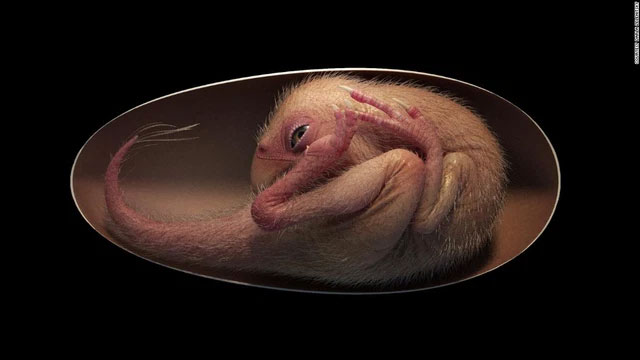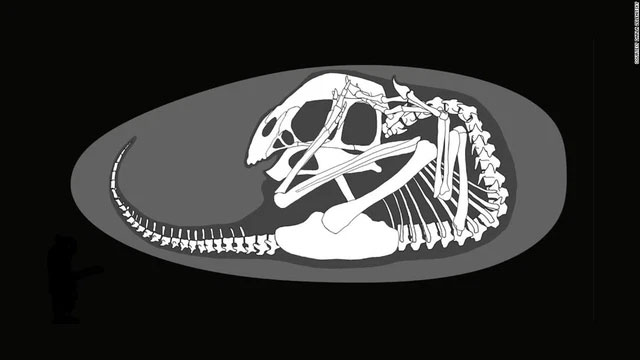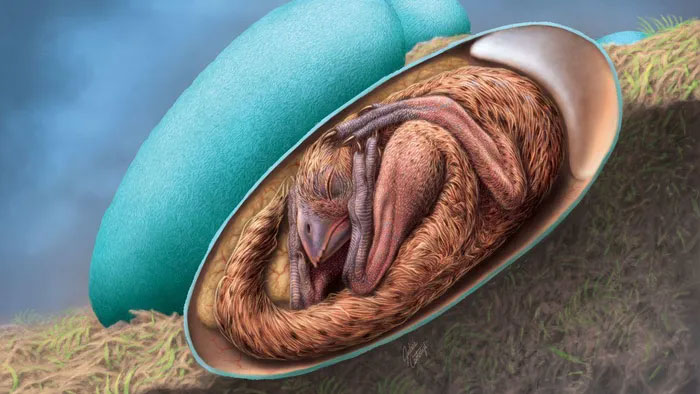The Yiliang Museum in China houses many valuable artifacts. However, few would expect that among the vast collection displayed here lies the intact embryo of a dinosaur hidden within a 70-million-year-old fossil.
Named Baby Yingliang, this dinosaur belongs to the carnivorous genus Oviraptor and could represent a missing link between dinosaurs and birds. The bones of young dinosaurs are incredibly fragile and prone to breaking, so they rarely survive long enough to become fossils. This fact makes the new discovery all the more unique.

This dinosaur belongs to the carnivorous genus Oviraptor.
“This is a remarkable specimen… I have been working with dinosaur eggs for 25 years but have never seen anything like this,” said Zelenitsky, a co-author of the new study, to the press. “Until now, we know very little about what happens inside dinosaur eggs before they hatch, as there are very few dinosaur bones from the embryonic stage, especially intact specimens that preserve the posture of life inside the egg.”
The dinosaur egg measures about 17 centimeters in length, and scientists estimate that the dinosaur that hatched from it would be around 27 centimeters long (including the tail). They believe that if it had survived to adulthood, Baby Yingliang would have grown to be between 2 to 3 meters long.
A team of scientists from China, the United Kingdom, and Canada meticulously studied the posture of Baby Yingliang, comparing it to previously discovered dinosaur embryos and concluded: before hatching, dinosaurs also shift and change position, just like birds do when they turn to break through their eggs.

This embryo is excellently preserved inside the egg.
“Most non-flying dinosaur embryos are incomplete, as most bones are dislocated,” noted Waisum Ma, the lead author of the study. “We were surprised to find this embryo excellently preserved inside the egg, lying in a position very similar to that of a bird. This posture has never been seen in any non-flying dinosaur embryo.”
Modern birds are direct descendants of a group of bipedal dinosaurs known as theropods, which include culturally iconic creatures like Tyrannosaurus rex and pack-hunting velociraptors. According to researcher Zelenitsky, modern birds also inherit the behavior of sitting on eggs to incubate them, just as their ancestors did millions of years ago.

Modern birds are direct descendants of a group of bipedal theropod dinosaurs.
The historical fossil was discovered in Jiangxi Province and was acquired in 2000 by Liang Liu, the director of a stone production company named Yingliang Group. After lying “dormant” in storage for ten years, when the Yingliang Stone Natural History Museum was built, museum staff organized the items in storage and uncovered the valuable egg.


















































